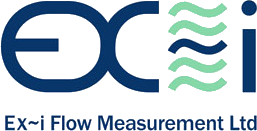Flow meters come in all shapes and sizes, engineered to measure the flow of a range of liquids and gases. Most commonly used is the Differential Pressure (DP) flow meter, known for its accuracy. The technique is used to measure numerous fluids including water, chemicals, cryogenic liquid, air, industrial gases and steam.
As a traditional form of flow measurement this technique is widely used across a variety of industries, including mining, petroleum and the chemical industry, because of its reliability and users’ familiarity with the process. The formula used to calculate flow rates with DP flow meters originates from Bernoulli’s equation, named after the Swiss scientist Daniel Bernoulli and is based on the principles of conservation of energy. The equation states that in the flow of fluid an increase in velocity occurs simultaneously with a decrease in pressure. In differential pressure flow measurement a constricting pipe, called an orifice plate, forces liquid and gases through a smaller gap where it loses pressure. According to Bernoulli the pressure drop experienced across the constriction is comparative to the flow rate. Data collected by the differential pressure meter is sent to the flow computer to calculate the flow rate of the fluid.
The SFC3000 flow computer allows the use of one, two or three Differential Pressure transmitters to expand on the range of the flow measurement. Calculating the flow through the orifice plates the SFC3000 flow computer works to the ISO 5167 2003, 1997 and 1991, and AGA 3 1992 standards. In the case of the ISO 5167 2003 the SFC3000 is unique in that it fully calculates the Joule Thompson Co-efficient to the standard and also to the Reader Harris approximation. Orifice plate calculations in combination with the SFC3000 are in use world wide but in particular in the specialist field of measurement of elemental gases such as Hydrogen, Nitrogen and Oxygen.
